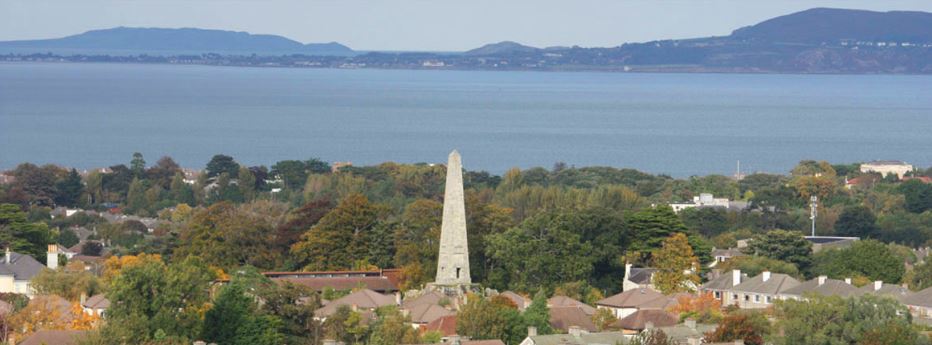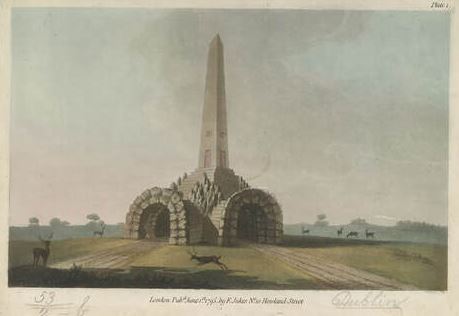
The oldest standing obelisk in Ireland is in Stillorgan, a suburb of Dublin City. It even predates the Boyne Obelisk by nine years. It was erected in 1727, the first Obelisk built in Ireland and was said to be inspired by the Bernini Piazza Navona Obelisk in Rome. This latter I find hard to credit because it looks nothing like a genuine graceful Egyptian stone.
It was designed by the Architect Sir Edward Lovett Pearce who also designed the Bank of Ireland Building on College Green, Dublin, opposite the entrance to Trinity College, which was the Irish Parliament building of its day. Pearce was commissioned, according to one story, by John Allen, 1st Viscount Allen, to design a monument as a memorial for his wife. But she is buried in London. Another story has it that there was a local famine at the time and the obelisk was commissioned as a form of famine relief to provide work to the local tenants.
In an Ancient Roman twist, reminiscent of Emperor Caligula, legend has it that the Second Viscount, Joshua Allen, had his favourite horse buried beneath the Obelisk. The Irish love a good story and there is no shortage of stories surrounding the obelisk.

It stands an impressive 100 feet high but rests upon an unsightly base that is thankfully softened these days by a blanket of greenery. This was designed to be a grotto with stairs leading up to the obelisk which also contains a room in the base accessed by egyptian styled doors. The construction predates the work of Capability Brown, who was only ten years old in the year of construction. But the tradition of constructing classical follies on large estate was well established in the early 18th Century. In truth this was probably a simple case of erecting a charming but pointless folly on the landscape to act as a faux ancient ruin and pleasing focal point. Then the bewildered local Irish filled in the blanks with multiple reasons for its construction.
In 1954 some local schoolboys were building a grotto to celebrate the Marian year at the foot of the Obelisk when they found a human skeleton. The Gardaí (Irish Police) were called in and assessed that it was the skeleton of a small woman who died from a blow to the head. But it was very old. So the National Musuem sent in experts who analyzed the flint and oyster shells in the grave and determined it to be a bronze age cist burial.
-=o0o=-
This site is available for free and I make no money from any ads you see here. If you would like to show your appreciation feel free to leave a comment or you can buy me a coffee! http://buymeacoffee.com/DonalClancy